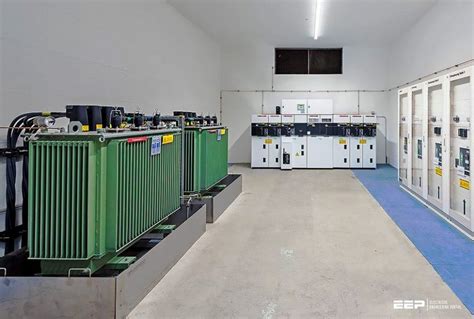lv mv | difference between hv and Lv lv mv This technical article will explain the most common power supply for LV networks provided by an MV/LV transformer. Don’t be confused, the same transformer with or without some modifications can be used also as a backup power supply, special power supply for safety services, or auxiliary power supply. Let’s see the most common power supply .
US. Promoted. Rolex Datejust 36. 126234 36mm Blue Motif Dial Oyster Bracelet Unworn 2023. $ 11,975.
0 · westinghouse Lv mv products
1 · mv Lv substation
2 · mv Lv meaning
3 · mv Lv electrical
4 · difference between hv and Lv
5 · Lv mv equipment
6 · Lv mv drives
7 · Lv and mv electrical equipment
January 20 – Donald Trump is sworn in as the 45th president of the United States, [27] and Mike Pence is sworn in as the 48th vice president. January 21 – 2.9 million people attend the Women's March in opposition to the inauguration of Donald Trump, making it the single biggest protest in U.S. history. [28] January 23.
Different Types of Voltage Level: The different type of voltage notations is being used in a power system transmission and distribution. Let see the type of . MV: 4kV to 35kV.
High (HV), Extra- High (EHV) & Ultra-High Voltages (UHV) - 115,000 to 1,100,000 VAC. Medium Voltage (MV) - 2,400 to 69,000 VAC. Low Voltage (LV) - 240 to 600 VAC. Generac issued a .Different Types of Voltage Level: The different type of voltage notations is being used in a power system transmission and distribution. Let see the type of voltage. Rated Voltage. Nominal Voltage. Extra-low Voltage.
MV: 4kV to 35kV. This technical article will explain the most common power supply for LV networks provided by an MV/LV transformer. Don’t be confused, the same transformer with or without some modifications can be used also as a backup power supply, special power supply for safety services, or auxiliary power supply. Let’s see the most common power supply .
High (HV), Extra- High (EHV) & Ultra-High Voltages (UHV) - 115,000 to 1,100,000 VAC. Medium Voltage (MV) - 2,400 to 69,000 VAC. Low Voltage (LV) - 240 to 600 VAC. Generac issued a white paper titled Medium Voltage On-Site Generation Overview. The white paper compares NEC to ANSI Standards. As such, as per the latest Regulations in vogue in India, there is no such classifications as LV, MV, HV & EHV. The National Electric Code (of India) 2011 (Reaffirmed in 2016): Part 1 – Section 2-Low Voltage: The voltage which does not normally exceed 250 V .
Voltage classifications typically include Low Voltage (LV), Medium Voltage (MV), and High Voltage (HV), each serving distinct purposes in power distribution and usage. This article explores these classifications and their applications, highlighting their differences and relevant products from Blue Jay.
High Voltage - 35kV to 230 kV. Extra High Voltage - above 230 kV. In some situations, the term Ultra High Voltage is used to denote voltages above 800 kV. In addition, the IEC defines a voltage band known as the Extra Low Voltage with a AC voltage less than 70 V. See article here.Low Voltage (LV): up to 1000V. Medium Voltage (MV): between 1000 V and 45 kV. High Voltage (HV): between 45 kV and 230 kV. Extra High Voltage (EHV): from 230 kV and above.When it comes to electrical cables, there are two main types: low voltage (LV) and medium voltage (MV) cables. Understanding the differences between these two types of cables is important for anyone working with electrical systems. “3.1 Low Voltage (LV): A class of nominal system voltages 1,000V or less. 3.2 Medium Voltage (MV): A class of nominal system voltages greater than 1,000V and less than 100kV. 3.3 High Voltage (HV): A class of nominal system voltages equal to or greater than 100kV and equal to or less than 230kV.
Different Types of Voltage Level: The different type of voltage notations is being used in a power system transmission and distribution. Let see the type of voltage. Rated Voltage. Nominal Voltage. Extra-low Voltage.

iwc mclaren
westinghouse Lv mv products

MV: 4kV to 35kV. This technical article will explain the most common power supply for LV networks provided by an MV/LV transformer. Don’t be confused, the same transformer with or without some modifications can be used also as a backup power supply, special power supply for safety services, or auxiliary power supply. Let’s see the most common power supply .
High (HV), Extra- High (EHV) & Ultra-High Voltages (UHV) - 115,000 to 1,100,000 VAC. Medium Voltage (MV) - 2,400 to 69,000 VAC. Low Voltage (LV) - 240 to 600 VAC. Generac issued a white paper titled Medium Voltage On-Site Generation Overview. The white paper compares NEC to ANSI Standards. As such, as per the latest Regulations in vogue in India, there is no such classifications as LV, MV, HV & EHV. The National Electric Code (of India) 2011 (Reaffirmed in 2016): Part 1 – Section 2-Low Voltage: The voltage which does not normally exceed 250 V . Voltage classifications typically include Low Voltage (LV), Medium Voltage (MV), and High Voltage (HV), each serving distinct purposes in power distribution and usage. This article explores these classifications and their applications, highlighting their differences and relevant products from Blue Jay.
High Voltage - 35kV to 230 kV. Extra High Voltage - above 230 kV. In some situations, the term Ultra High Voltage is used to denote voltages above 800 kV. In addition, the IEC defines a voltage band known as the Extra Low Voltage with a AC voltage less than 70 V. See article here.
Low Voltage (LV): up to 1000V. Medium Voltage (MV): between 1000 V and 45 kV. High Voltage (HV): between 45 kV and 230 kV. Extra High Voltage (EHV): from 230 kV and above.When it comes to electrical cables, there are two main types: low voltage (LV) and medium voltage (MV) cables. Understanding the differences between these two types of cables is important for anyone working with electrical systems.
mv Lv substation
iwc mark xviii blue

Oval shaped faces have balanced proportions and are longer than they are wide. An oval face shape’s key features include: A face that is longer than it is wide; A forehead wider than the chin but approximately the same width as the jaw; A rounded jawline; Cheekbones that are the widest part of the face
lv mv|difference between hv and Lv



























